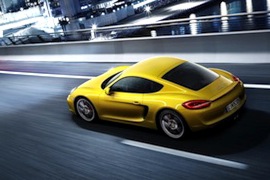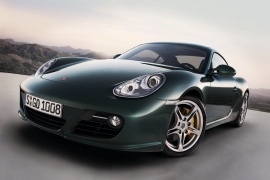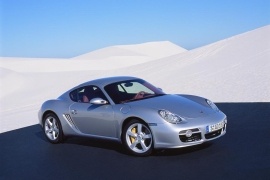PORSCHE Cayman S Models/Series Timeline, Specifications & Photos
First production year: 2005
Engines: Gasoline
Body style: Coupé (two-door)
The 2012 Porsche Cayman continued the idea from its first generation: to be a mid-engine sports car to be used as a daily driver and a track-day car at the weekends.
The history of the mid-engined cars from Porsche goes way back in history. In the mid-'70s it tried the market with the 914 Targa, but the low powered vehicle was not very well received by the market. In 1996, Porsche decided once again to add a new base model for its lineup and introduced the Boxster. This time, it gave it a better engine. Due to its success, in 2005 a second generation was introduced. This time Porsche listened to its customers who were looking for a lighter version and introduced the Cayman S to the market. It was more powerful than its sibling, the Cayman, and unlike its previous generation, both versions were introduced at the same time.
The well-proportioned car featured a mid-engine and a flat and low front side. The greenhouse was sloped rear with a big window, right before the rear deck-lid. The car featured two trunks: one in the front and one in the rear, behind the engine bay. That led to a 425 liters (15 cu-ft) of luggage capacity, an increase by 10 liters (0.35 cu-ft) over its predecessor. The side air-intakes for the engine were bigger.
Inside, the Cayman S featured two sport-bucket seats. The dashboard was slightly tilted toward the driver. The instrument cluster featured three dials with a digital display on the right side.
The top-model was the Cayman S with a 3.44-liter engine that was mated to a 6-speed manual and the same option for the automatic transmission as the base model. There was an option for a PDK (double-clutch) automatic gearbox with 7 speeds.
Four years after the introduction of the Cayman S, the sportier version of the mid-engine sports coupe Porsche was refreshed. It was even faster and could carry more cornering speed.
The facelifted version of the Cayman S offered a completely enhanced package. From the exterior to the interior, from the engine to the gearbox and suspension, it was reworked. It might be mistaken with a new model if the Porsche internal coding system wouldn't be the same as on the 2005 Cayman S (987C).
At the front, a new pair of headlights were installed, with a bigger lens for the main beams and the stationary lamps. The fog-lights were installed upper and on the outer side of the side air-scoops from the apron. A reshaped, and smaller, front grille was installed. In the back, the taillights were completely different and featured all red-lights with LEDs. The exhaust was replaced with a twin-round unit, instead of the single, rectangular, unit as on the non-facelifted version.
Inside, the new infotainment unit with a 5” screen and MP3 compatible CD-player was featured as standard. As an option, a PCM (Porsche Communication Management) with a 6.5” touch-screen was installed for more options. The Bluetooth connectivity with the mobile phone was offered as an option for both versions.
The engine was kept at 3.4-liter displacement, but due to its new direct-fuel injection system, the power was increased by 25 hp over its non-facelifted version. It was paired with either a 6-speed manual or a 7-speed PDK (double-clutch) automatic gearbox.
In 2005, the Cayman S range entered the market to offer a fast, mid-engine coupe in the Porsche lineup. Strangely, the first version of the stable was the S, while the normal version joined a year later.
To call the Cayman a Boxster with a fixed roof does a disservice for both sports cars. That mistake was understandable since the first generation of the Cayman was unveiled at the same time with the second generation of the Boxster and most of its parts were shared. But while the Boxster was built to enjoy a fast, or relaxed, drive under the open sky, offering a true roadster experience, the Cayman was built more for track days, with a stiffer bodywork focused on the driving experience.
From the outside, the 2005 Cayman S took its inspiration from some of the legendary Porsche models such as the 550 Coupe and the 904 Carrera GTS coupe. The round headlights, the lower lip under the apron, and the side air-intakes placed in the mid-height of the rear quarter panels evoked some of the older Porsche models. The swept-back greenhouse offered enhanced the aerodynamic profile. In the back, the car was fitted with an active rear wing that was deployed automatically, depending on the speed.
Inside, the Cayman S offered room for two passengers. The interior featured most of the parts from the Boxster II, with the same layout for the instrument cluster. On top of the dash, if the Sports Chrono Package was selected, the car-maker installed a chronograph.
In the middle of the car, the Cayman S offered a 3.4-liter flat-six engine mated to a standard six-speed manual. A 5-speed automatic with manual override (Tiptronic) was available on the options list.


